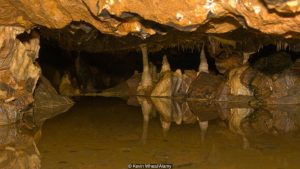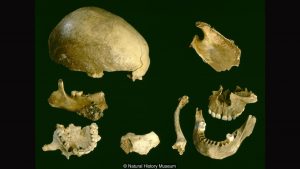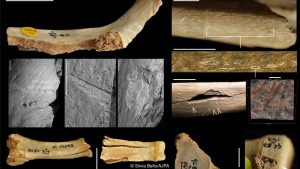Analysis of human remains, discovered in Gough’s Cave near Bristol, United Kingdom, revealed marks of cutting and de-fleshing of two adolescent individuals and one being around three-years-old at the time of death.

Excavations in the cave, conducted in the 1980s, revealed numerous human and animal remains with clear traces of butchery. Their analysis over following decades revealed that these traces were marks of cannibalistic behaviour. The cut marks on the human bones are usually clear signs of butchery, and so is in case of the ones from Gough’s Cave. Over 65% of bones are covered with cut marks made with stone tools. A lot of bones were smashed, presumably to extract bone marrow – same way animal bones were treated.

Moreover, human tooth marks were found, in form of clearly visible, easy to identify pitted marks. According to the experts, this is probably the best evidence for cannibalism. This is also evidence that the flash was not only removed by the remains were feasted on, as de-fleshing activities sometimes are connected with secondary burials and burial habits of prehistoric people.

Human remains on the site are also said to fit remains of other fauna found at the site. What is interesting, the human bodies from Gough’s Cave show no signs of violent death. Other interesting finds from the cave, involving human remains, include skulls that were turned into a form of bowl. It is believed that these skull caps were made as part of a ritual or burial practice and were eaten or drank from.

According to the experts cannibalism is usually the result of violence, and the victors take an extra step to insult the death by eating their remains. If the people died as a result of conflict, there would most likely only be adult victims of cannibalism, but that was not the case. There is no observable evidence of violence on Gough’s Cave skeletons, but there are many ways to kill that do not leave a mark on the skeleton. Experts suggest that he environment in which these people lived drove them to extreme behaviour – a particularly cold winter may have depleted their food resources, forcing them to eat any individuals who died in order to survive.

(after BBC)